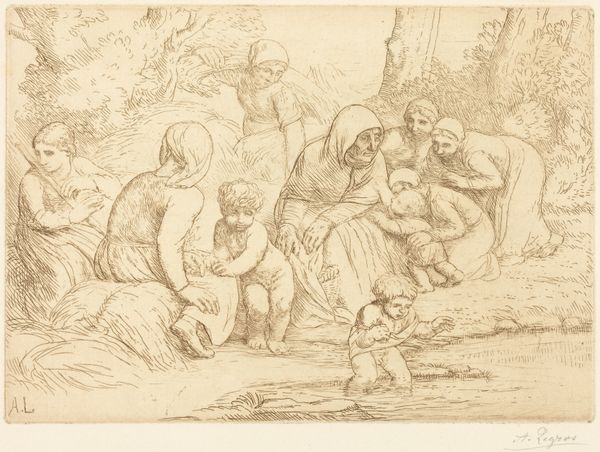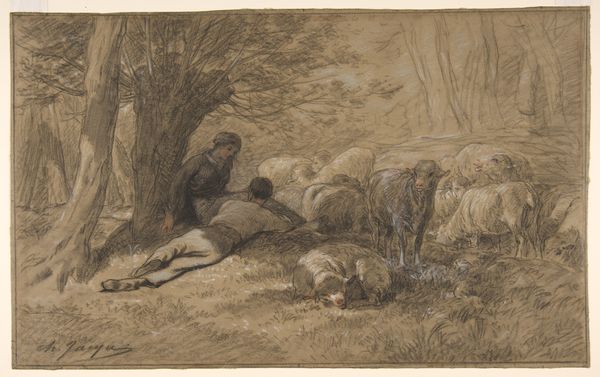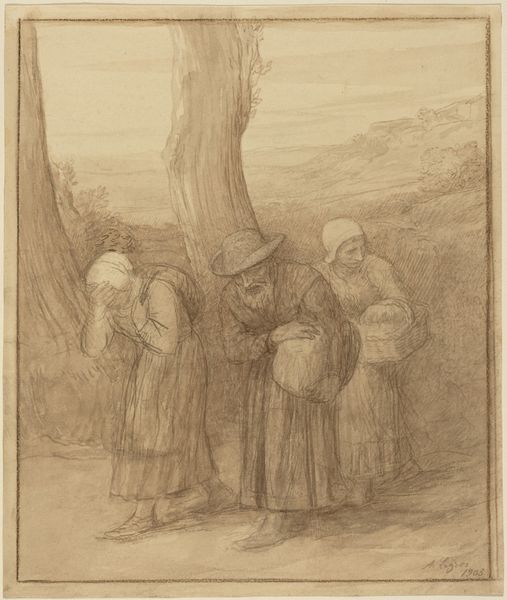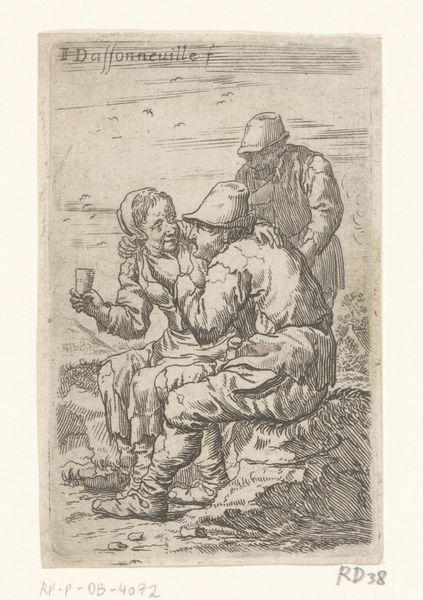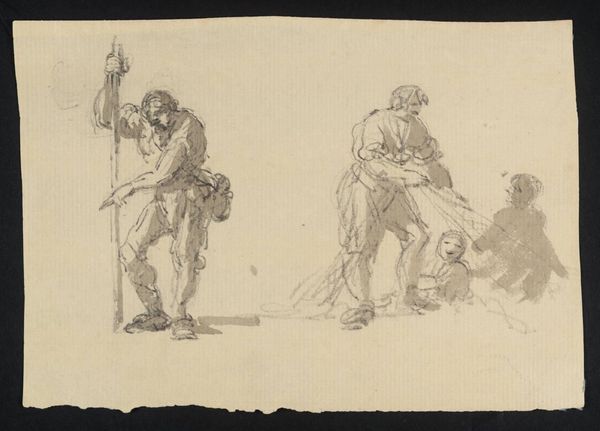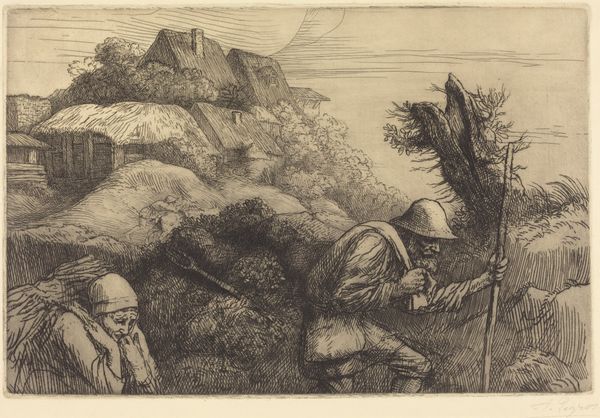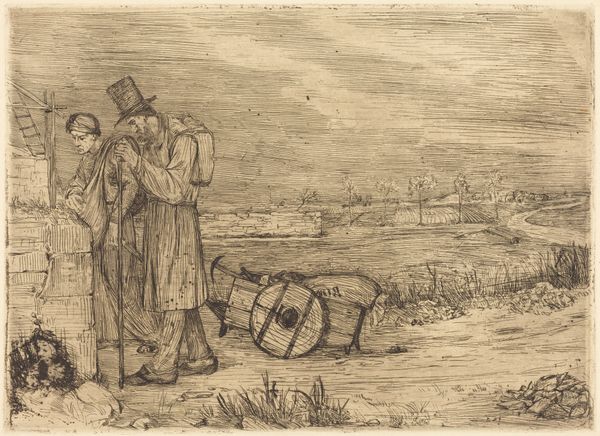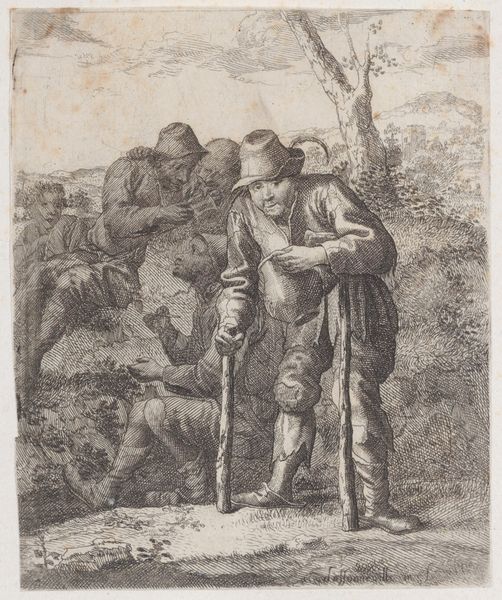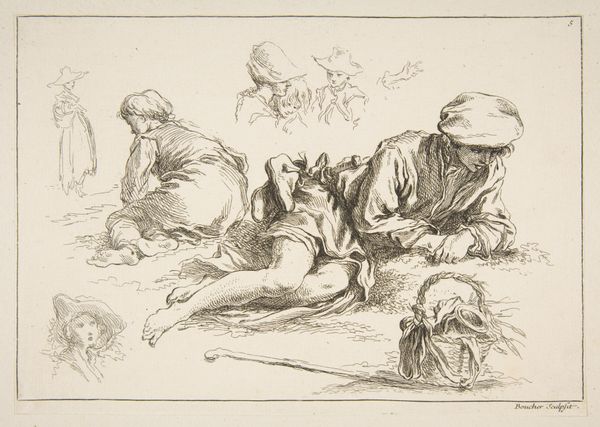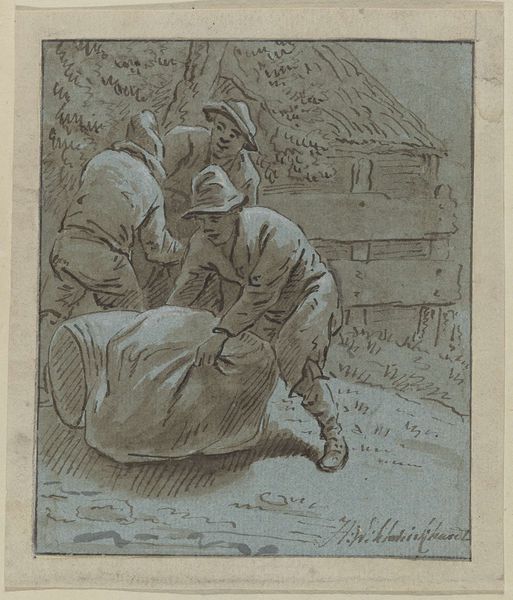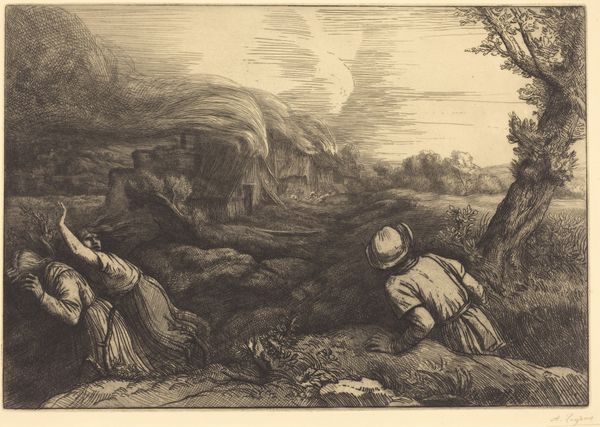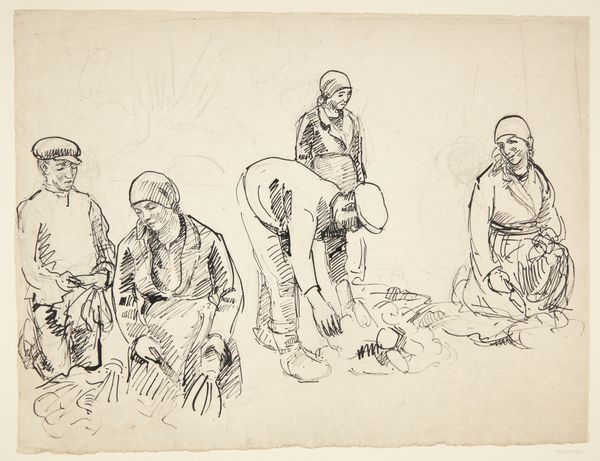
Copyright: Public Domain
Curator: Welcome. Here we see “Five wanderers,” a drawing created with pencil and ink on paper in 1909 by Wilhelm Altheim, now held at the Städel Museum. Editor: My first impression is one of quiet exhaustion. The earth-toned inks create a somber mood, mirroring the apparent weariness of these figures trudging across a seemingly barren landscape. Curator: Consider the time in which this work was made. Early 20th century Germany faced rapid industrialization and social upheaval. Works of art reflected the commoner during those changing and challenging times, capturing individuals navigating an increasingly complicated and sometimes unforgiving social landscape. Editor: Certainly. Looking at the formal elements, there's a clear emphasis on line. Altheim's dense hatching creates a sense of weight and volume in the figures, yet they seem strangely disconnected from the landscape. Almost as if the focus of the work is not where they are going, but who these characters are. Curator: Absolutely. In viewing it from that perspective, we must look to how Altheim represents this shared humanity of struggle and resilience. The work doesn't simply portray their physical journey, it invites the viewer to reflect upon those marginalized, alienated individuals, and question why such lives and journeys go relatively unseen. Editor: I can see how that narrative informs your reading of the work. Formally, the composition steers me as a viewer. My eye goes straight to the figure at the forefront. This work might serve more as a commentary on society’s treatment of these people in need, or simply point out their presence among the rest. Curator: I agree that that foreground figure holds the most prominence in the picture, with the staff. You make a good point because the way the figures cluster is a reflection of how the world can be improved for the betterment of everyone through collaborative activism. It suggests that even in hardship, there can be a sense of mutual aid. Editor: Viewing art is a subjective exchange between work and audience, where one finds meaning in the details of lines and form and the other reads sociopolitical cues embedded within its structure. Both enhance our comprehension, wouldn’t you say? Curator: Indeed, allowing us to see more profoundly through different perspectives what it meant to journey both literally and figuratively during Altheim's time, and now.
Comments
No comments
Be the first to comment and join the conversation on the ultimate creative platform.
